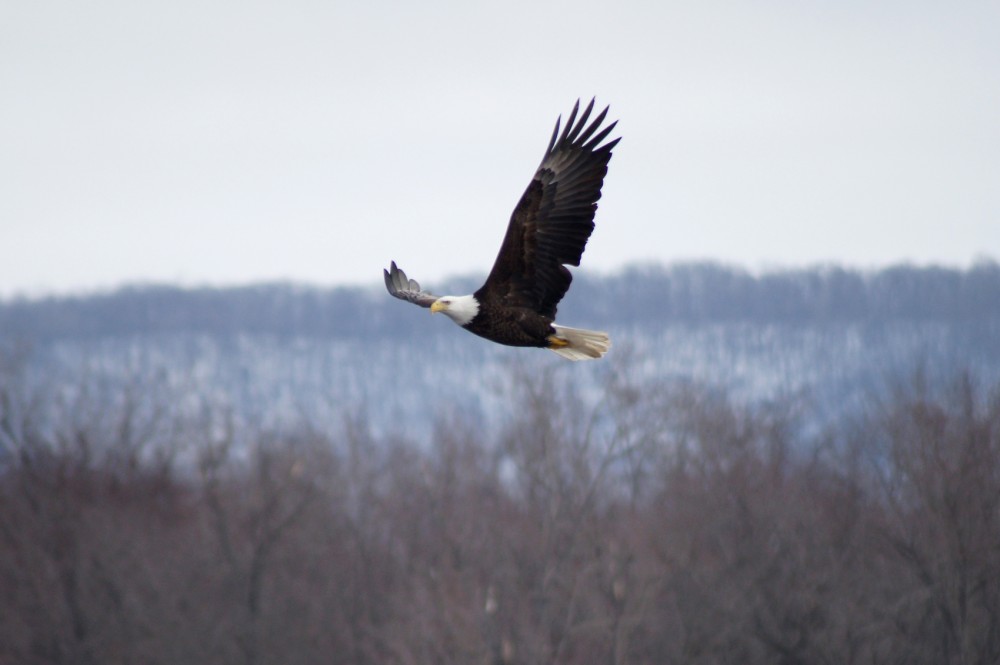Warmer winters have caused America’s national bird to stop seeking out more southern nesting places.
Over the past several years, mild winters in Minnesota have triggered bald eagles to change their migration patterns.
Warmer temperatures have caused many water sources to stay unfrozen during the winter, which allows bald eagles to continue to find food sources further north, Minnesota Department of Natural Resources Nongame Wildlife Specialist Lori Naumann said.
Bald eagles are not typically long-distance migrators, Raptor Center Executive Director Julia Ponder said.
They’ve stopped heading south because more open water has reduced crowding and competition for resources during the winter months, said National Eagle Center Education Director Scott Mehus.
Bald eagles living in northern Minnesota, northern Wisconsin and as far away as Hudson Bay, Canada, need to migrate when the lakes freeze over in winter, he said.
Migrating eagles move southward toward Wabasha, Naumann said, because ice melts quicker there. This attracts large concentrations of eagles in the spring, she said, because of plentiful food supply.
“Really this is all about food,” Ponder said. “They are looking for fish and waterfowl … on open water.”
This past winter, the number of bald eagles that gather in southern Minnesota hotspots — like Red Wing and Wabasha —has decreased because more water in northern Minnesota and Wisconsin has stayed open, Mehus said.
“We have not had the high concentration of eagles among the open water here along the river that we often have in a more traditional winter,” he said.
Water that stays open all year is either fast-moving or can be kept open artificially by power plants, Naumann said.
Because southern Minnesota has more fast-moving bodies of water, eagles can live there year round, Mehus said.
Furthermore, warmer temperatures offer a wider variety of places for eagles to nest, she said.
Even without plentiful water sources, bald eagles can find sustenance in other ways, like scavenging, Naumann said.
“Their vast diets allow them to hunt and get food from a lot of different sources,” she said. “So if they don’t have to migrate, they don’t.”
Naumann said researchers have found similar patterns in other species of birds recently, such as robins and bluebirds. These patterns are rarer for birds that are not carnivorous, so there’s no great alarm for eagles just yet.
“Every couple of years there’s another species that we’ve been getting reports on … and it’s always related to food,” Naumann said. “They have to have a source of food.”

















